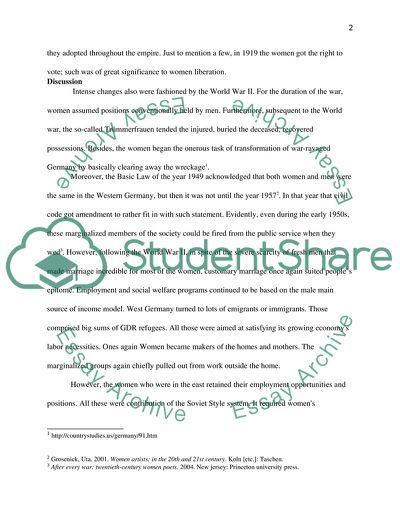Cite this document
(Women in the 20th Century in Germany Essay Example | Topics and Well Written Essays - 1500 words, n.d.)
Women in the 20th Century in Germany Essay Example | Topics and Well Written Essays - 1500 words. https://studentshare.org/history/1879941-women-in-the-20th-century-in-germany
Women in the 20th Century in Germany Essay Example | Topics and Well Written Essays - 1500 words. https://studentshare.org/history/1879941-women-in-the-20th-century-in-germany
(Women in the 20th Century in Germany Essay Example | Topics and Well Written Essays - 1500 Words)
Women in the 20th Century in Germany Essay Example | Topics and Well Written Essays - 1500 Words. https://studentshare.org/history/1879941-women-in-the-20th-century-in-germany.
Women in the 20th Century in Germany Essay Example | Topics and Well Written Essays - 1500 Words. https://studentshare.org/history/1879941-women-in-the-20th-century-in-germany.
“Women in the 20th Century in Germany Essay Example | Topics and Well Written Essays - 1500 Words”. https://studentshare.org/history/1879941-women-in-the-20th-century-in-germany.


